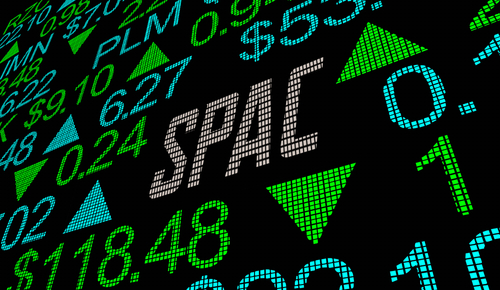 A SPAC is a special purpose acquisition company. It is typically sponsored by a venture capitalist or a private equity firm that has expertise in a specific sector or industry, such as green technology. A SPAC launches as an IPO, but it is nothing more than a shell company that raises money from investors. Post-IPO, it has a limited amount of time (one to two years) to merge with an existing company, where the capitol is deployed. Once that happens, the private operating company trades publicly under the SPAC name.
A SPAC is a special purpose acquisition company. It is typically sponsored by a venture capitalist or a private equity firm that has expertise in a specific sector or industry, such as green technology. A SPAC launches as an IPO, but it is nothing more than a shell company that raises money from investors. Post-IPO, it has a limited amount of time (one to two years) to merge with an existing company, where the capitol is deployed. Once that happens, the private operating company trades publicly under the SPAC name.
While SPACs have been around for about 30 years, they’ve only become popular in the past year or so. In fact, this year investors have already poured more than $100 billion into these vehicles, and that’s more than the total amount raised since they were first introduced. SPACs offer investors the opportunity to buy into a startup, which might be at early-, middle- or late-stage development when it partners with the SPAC. In 2020 and 2021, industries heavily represented by SPACs include electric vehicles, consumer-oriented technology, communications and retail.
What makes the SPAC particularly interesting is that investors do not know what company they are buying into since the entity has no commercial operations of its own. As such, they are sold largely based on trust in the management sponsor and belief in the growth potential for the industry it represents.
SPACs differ from traditional IPOs in that the IPO price is not based on the valuation of an existing business. Instead, investors typically pay $10 per common share of regular stock at the initial offering. These shares are referred to as units. Each unit also includes a warrant, which offers the right to purchase the company’s stock at a specific price and at a later date. Once a SPAC merges with a private company, the shares and warrants are listed and publicly traded on the stock exchange. Capital raised by the sale of warrants is typically used to compensate the SPAC sponsor.
One of the appeals of the SPAC model is that individual investors have the opportunity to invest in a startup that has been vetted and funded by an experienced private equity partner. This presents less risk as well as a ground-floor opportunity that is usually not feasible for individual investors. Most IPO opportunities require higher capital investments and occur at a later stage of development. SPACs provide the opportunity to commit a smaller investment at an earlier stage in a company’s life cycle, which often offers the potential for higher returns.
Unfortunately, the lack of a longer, established track record also increases risk – which is something the Securities and Exchange Commission (SEC) is currently scrutinizing. For now, the SEC has taken a hands-off approach, hoping the market will regulate itself. However, if SPAC sponsors oversell the entity’s capabilities or investors become disillusioned with the returns on their investment, the SPAC market may be subject to considerable regulation in the future.
As for investment returns, the outcomes are mixed. Initial SPAC IPOs tend to outperform the S&P 500. However, once SPACs merge with their respective private companies, the results tend to be less impressive. Given their recent surge in popularity, there’s no way to gauge their long-term performance success.
Disclaimer ![]()
![]()

